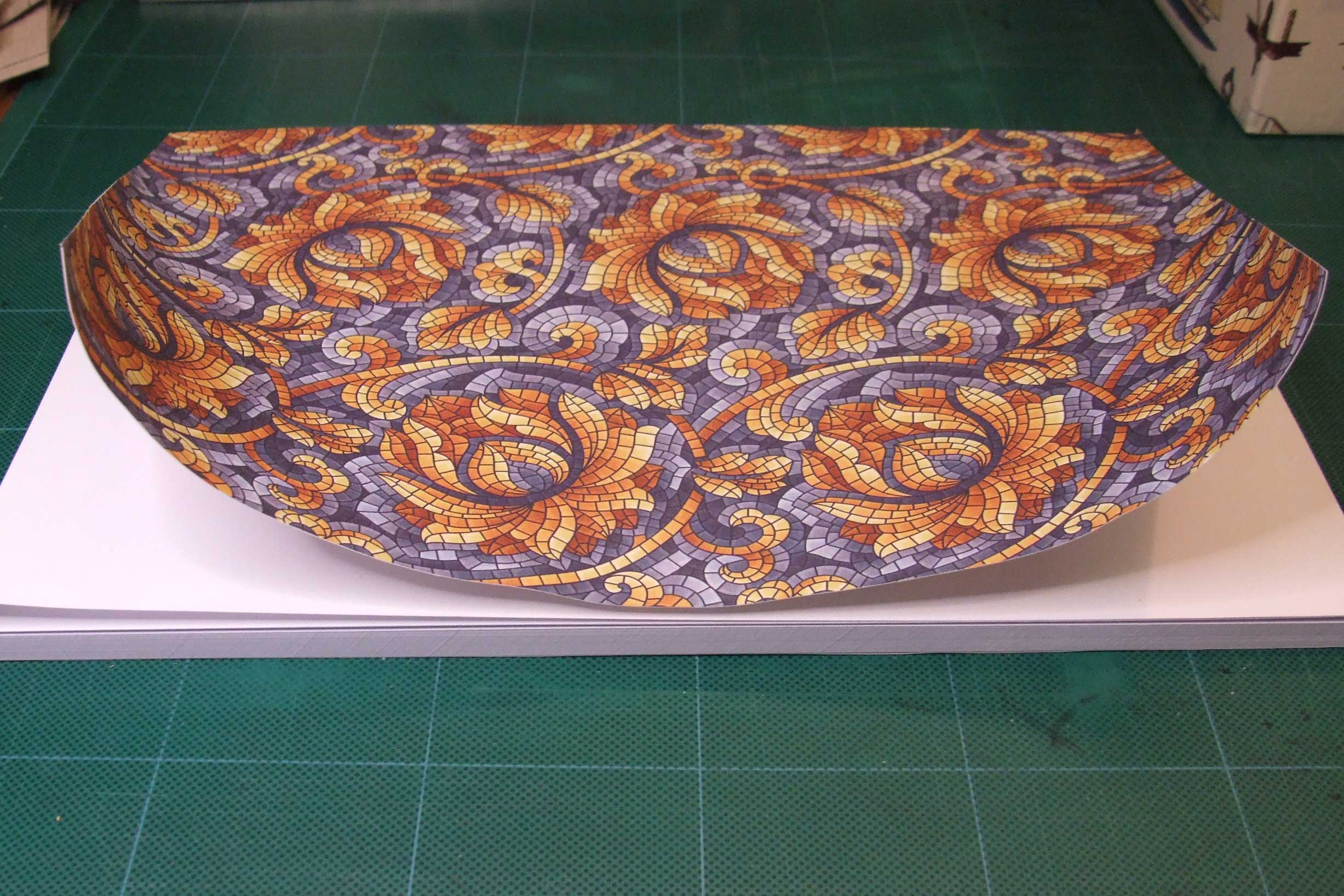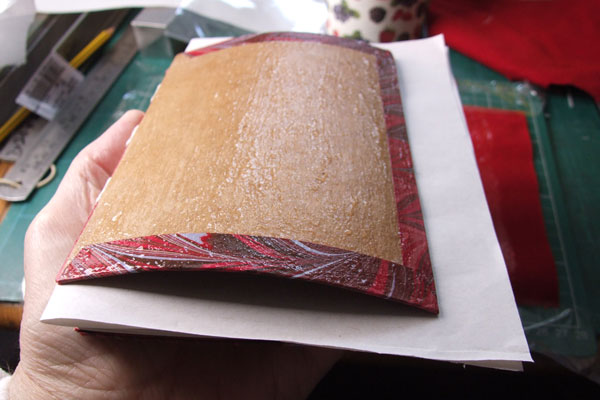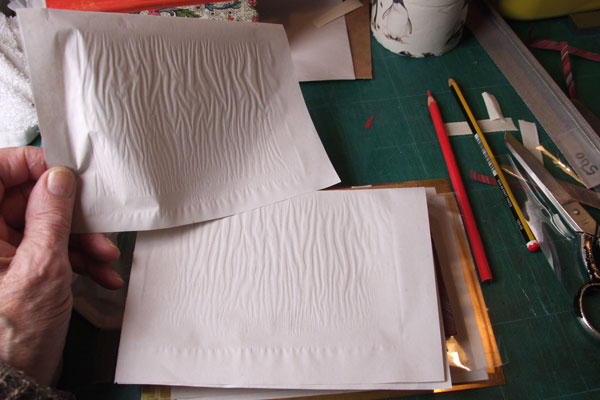
Ouch ~ someone did not test the grain direction ~
nor did I dry it under pressure

This is a classic example of a basic mistake. A sheet of decorative paper has been wrapped around a book and pasted onto a thin card cover. It has been left to dry, but after drying it has still curled up. There are several comments to make on this.
Note that the bottom cover ~ made in exactly the same way ~ looks flat, and is flat ~ at least it has not the pressure to lift the book off the desk. It dried out under the light pressure of the book and the paper and card have settled down amicably. Drying the whole thing ~ with chip paper and a can of beans [116042] ~ would have saved the situation.
The curl is uneven ~ a huge curl at the fore edge (closest to the camera) ~ no curl at the spine ~ since it is anchored to the fold around the hinge ~ the hinge cannot fold (although it is put under strain). Here the uneven drying has caused a pretty pattern in an unimportant book. Crinkles and curls can cause unsightly and most unwelcome bulges and warps ~ usually as the finishing toouches are being made to week's careful work on a large book.
Because the cover has been allowed to dry naturally it has formed a comfortable shape. It will be difficut now to get it back to the required flatness. Careful dampening and re-drying under pressure ~ it need not be heavy pressure ~ may cure it. Be sure to place a sheet of waterpoof material ~ tins ~ thins [125332] ~ a plastic bag ~ between the dampened cover and the leaves of the book ~ otherwise those pages will get damp also. It is surprising how readily water travels through papers ~ all part of the bookcrafter's learning experience.
The other experience that was ignored by me ~ and the most important silly mistake ~ is that it is obvious that the grain of the cover paper is going in the wrong direction. There are not many rules in bookbinding ~ one of them is that the grain must always run parallel to the spine. On most decorative papers the pattern emphasises the grain direction to the bookcrafter. There is no hint of directionality in this mosaic pattern ~ by Grafiche Tassotti ~ Paper Mosaico rosone Product Code: 400. I should have made a simple test first of all ~ but (on the credit side) it has provided me with a wonderful lesson to pass on to you!

I have read in some guides (sorry ~ no reference for them at present) that only the the end-paste-downs should be pasted ~ and not the insides of the covers. I suspect that advice holds good for books with really thick board covers. Remember ~ in the olden days they really were boards of wood. I was pasting the cover in the picture above because it was a very thin card which did not have the strength to resist the curling of the drying paste-down. With so much paste it will take a very long time to dry out ~ probably a fortnight under gentle pressure ~ with thins [125332] ~ with soakers [127275]~ with pressure [117028].

The chip paper [115230] in the picture above has been absorbing moisture from a paste-down for an hour. There is still a lot of moisture to be removed. It will be changed for another for dry sheet every hour for the rest of the day ~ and several times tomorrow [116042].
I have more notes on this and related subjects [125332].
